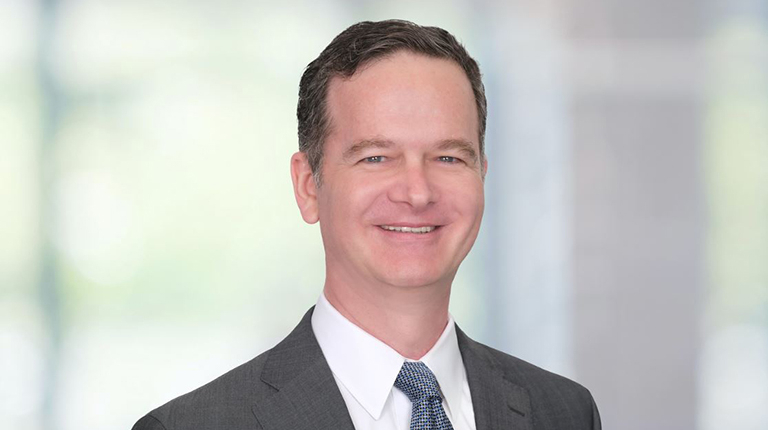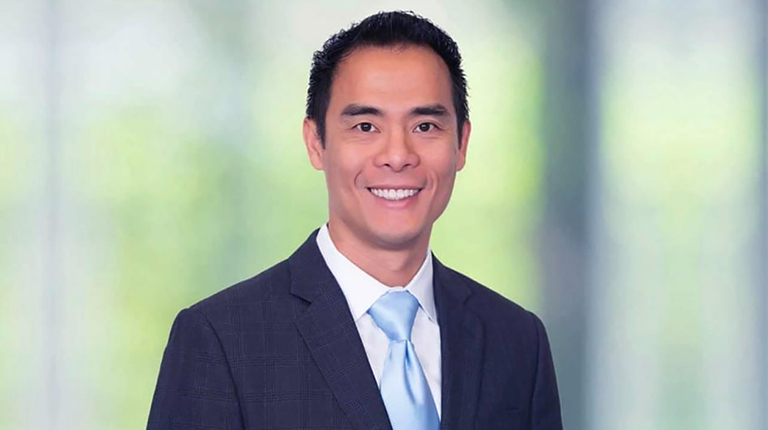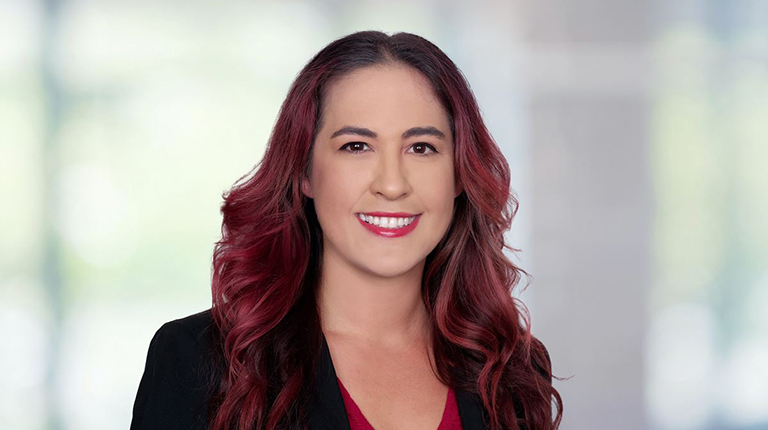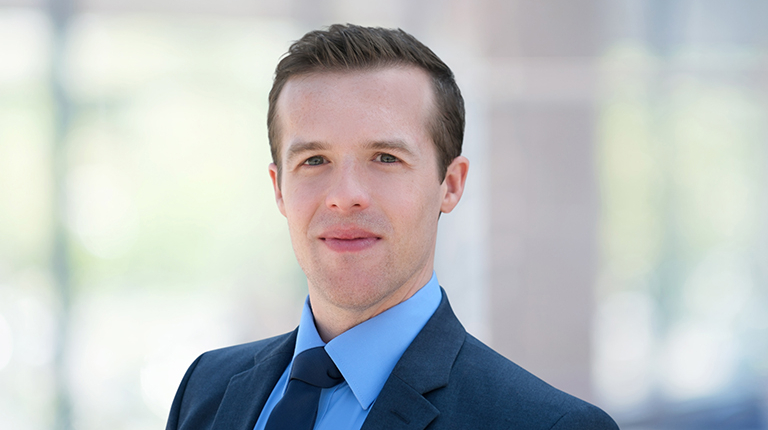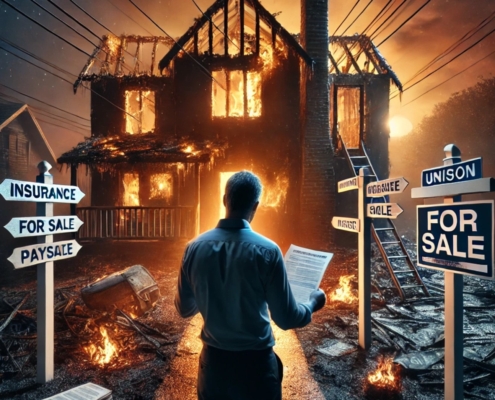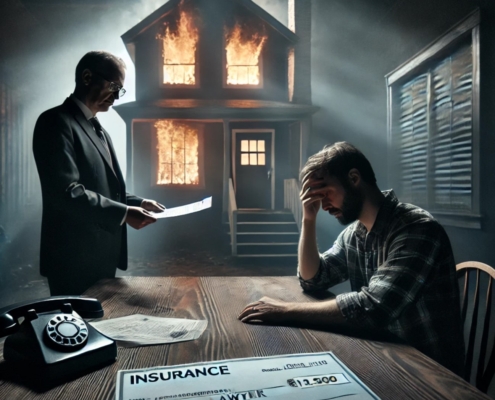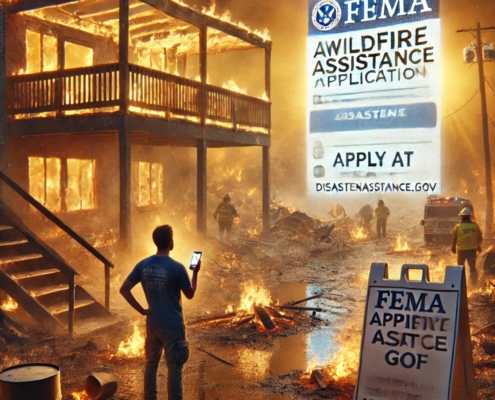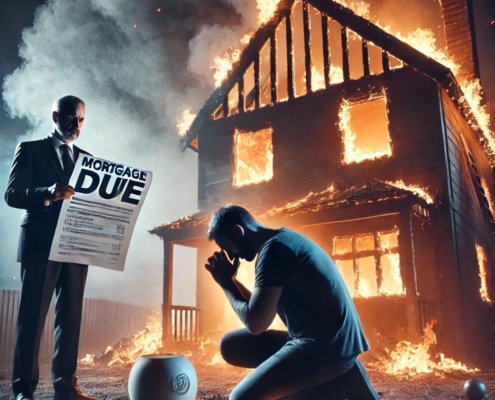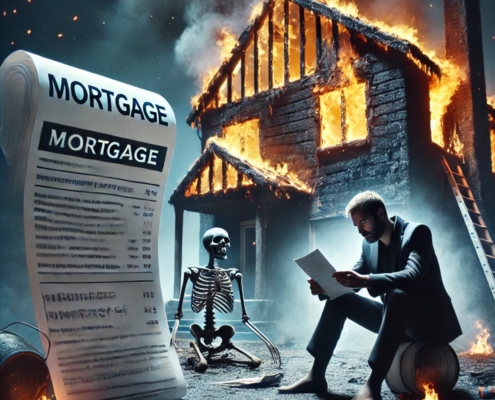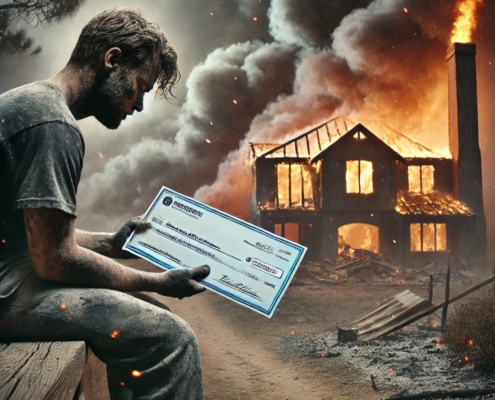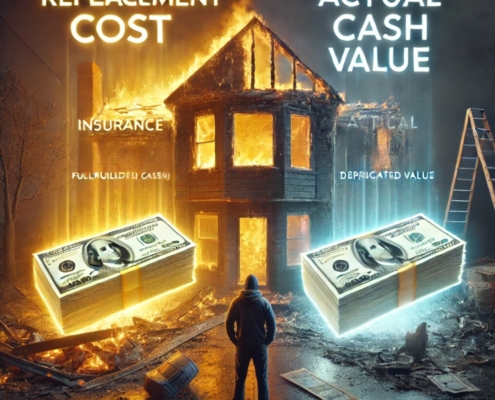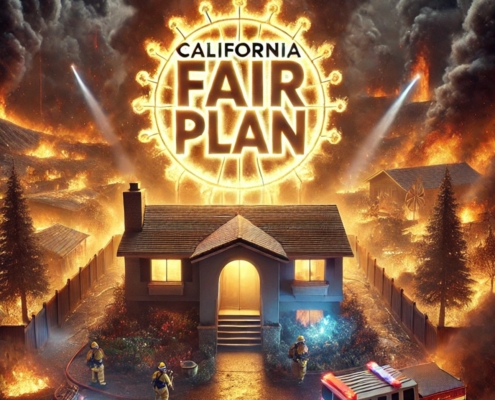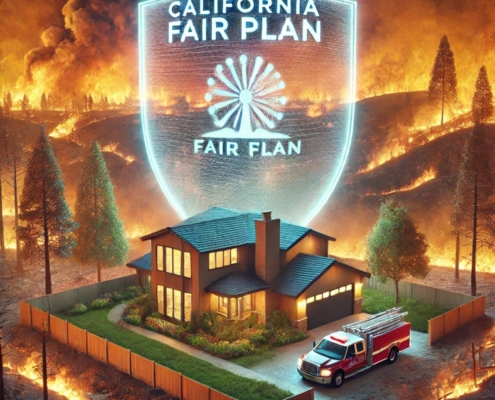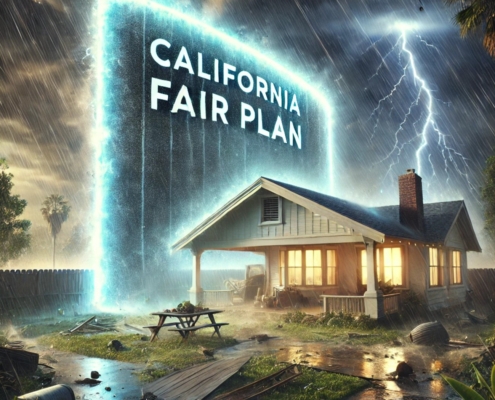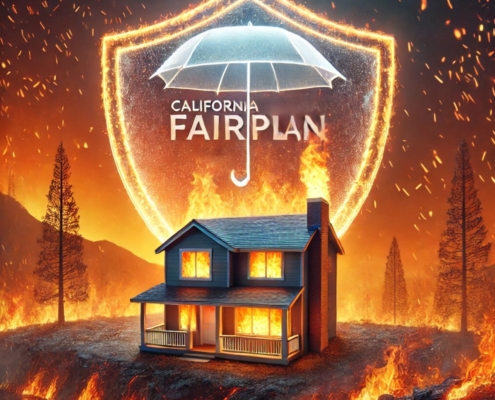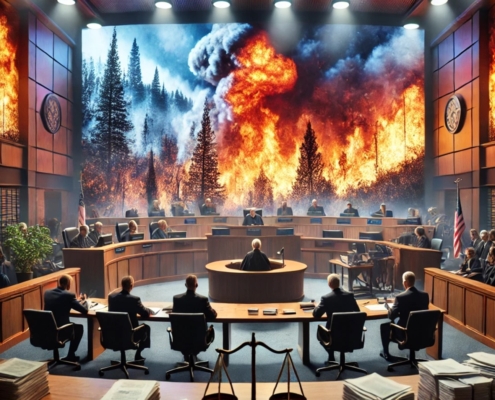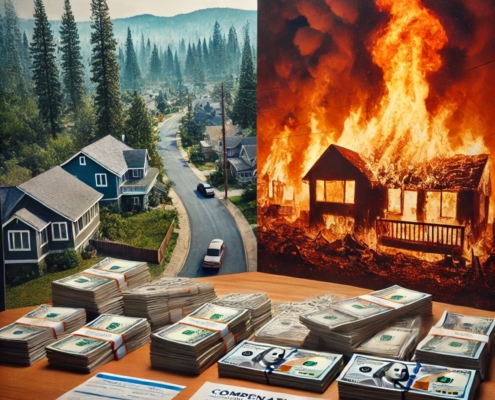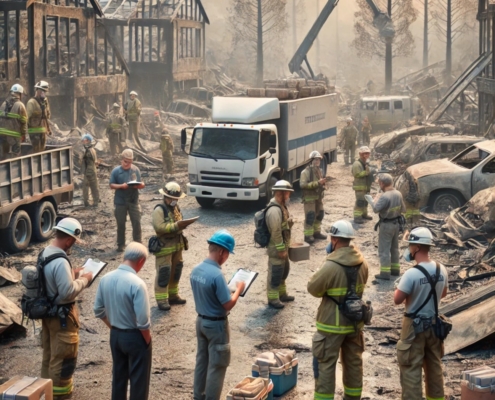The California FAIR Plan: A Safety Net for High-Risk Properties
The California FAIR Plan, created in 1968, was established to provide essential insurance coverage to homeowners and businesses who cannot obtain it through the private market. Designed as a last-resort option, the FAIR Plan covers specific perils, including fire, lightning, smoke, and internal explosions. Its mission is especially critical in wildfire-prone regions, where private insurers have become increasingly reluctant to offer coverage.
Despite its role as a safety net, the FAIR Plan has significant limitations. It is not comprehensive, as it excludes liability coverage, theft, water damage, and additional living expenses unless supplemental policies are purchased. Its maximum coverage limit of $3 million per policy may also be insufficient for properties in high-value areas like Malibu or Pacific Palisades. Our wildfire insurance attorney notes that many homeowners may find themselves underinsured in such high-risk areas.
The challenges of insurance claims become even more acute in areas severely impacted by the wildfires:
-
- Pacific Palisades: The Palisades Fire burned over 23,713 acres starting on January 7, 2025, destroying homes and cultural landmarks.
- Altadena: The Eaton Fire devastated this community, destroying thousands of structures, including historic restaurants and businesses along Lake Avenue.
- Malibu: Parts of Malibu, known as the Malibu fire, suffered significant losses as the Palisades Fire extended into the area, leading to the destruction of beachfront properties.
- Topanga: This community faced evacuations and property losses as the Topanga fire spread through the region.
- San Fernando Valley: The Hurst Fire burned approximately 799 acres near San Fernando, causing evacuations and damage to properties.
These widespread damages amplify the difficulties for businesses trying to quantify their losses and file comprehensive claims. Working with a Los Angeles fires lawyer or an Altadena fire lawyer can help streamline the claims process and ensure a fair settlement.
The January 2025 Los Angeles Wildfires: A Month of Devastation
In January 2025, a series of catastrophic wildfires swept through Southern California, including the Palisades Fire, Eaton Fire, Altadena Fire, Malibu Fire, Topanga Fire, and Hurst Fire. These fires burned tens of thousands of acres, destroyed homes and businesses, and left entire communities grappling with the aftermath.
The Palisades Fire
The Palisades Fire alone burned nearly 24,000 acres, destroying over 6,380 structures in Pacific Palisades and parts of Malibu. The rapid spread of the fire, fueled by dry vegetation and strong winds, forced thousands to evacuate and caused billions in property damage. Our fire damage insurance claim attorney highlights the importance of understanding the FAIR Plan policy limits in high risk fire areas like Pacific Palisades.
The Eaton and Altadena Fires
The Eaton and Altadena Fires devastated the foothills near Pasadena, burning more than 14,000 acres combined. Over 7,000 structures were reduced to ash, with Altadena particularly hard-hit. Our Eaton fire attorney and Palisades fire attorney emphasize the critical role of timely claims filing to secure recovery funds.
The Malibu, Topanga, and Hurst Fires
The Malibu and Topanga Fires scorched coastal and canyon areas, destroying hundreds of homes and reshaping iconic landscapes. The Hurst Fire, though smaller, still leveled more than 500 structures within hours, showcasing the unpredictable nature of wildfire disasters. Our SoCal fire attorney advises affected homeowners to consult experienced fire insurance claim lawyers to navigate the claims process effectively.
The collective impact of these fires was staggering, with an estimated $30 billion in property damage. This includes both insured and uninsured losses, making it one of the costliest wildfire events in California’s history. Our California fire attorney stresses the importance of understanding the scope of wildfire insurance coverage in the wake of such catastrophic events.
Can the FAIR Plan Handle the Financial Strain?
The California FAIR Plan has been thrust into the spotlight as thousands of policyholders file claims for damages from the January 2025 wildfires. However, concerns are mounting about whether the plan has sufficient resources to meet these obligations.
FAIR Plan’s Financial Resources
As of early 2025, the FAIR Plan had approximately $377 million in reserves and $5.75 billion in reinsurance coverage. While these figures may seem substantial, they pale in comparison to the estimated $30 billion in total losses caused by the January wildfires. Our California wildfire lawyer points out that claims to the FAIR Plan alone could exceed $4 billion, creating a significant shortfall.
Given the scale of the damage, the FAIR Plan faces a significant shortfall in its ability to pay claims. While not all of the $30 billion in losses are covered by the FAIR Plan (since many affected properties have private insurance or no insurance), experts estimate that claims submitted to the FAIR Plan could exceed $4 billion. This far outstrips the plan’s available funds.
Why FAIR Plan Funds May Not Be Enough to Cover Claims
Even if homeowners affected by the January 2025 wildfires are insured under the California FAIR Plan, there is a significant possibility that the plan will not have enough money to pay out all claims. This is due to a combination of factors:
- Insufficient Reserves: With only $377 million in reserves, the FAIR Plan’s immediate financial resources are far below what is needed to address claims that could exceed $4 billion.
- Rising Claims Volume: The increasing reliance on the FAIR Plan—due to private insurers withdrawing from high-risk areas—has led to a surge in policies. This means that more claims are being filed, placing additional strain on the plan’s limited resources. Our California wildfire lawyer notes that this trend will continue unless significant reforms are implemented.
- Reinsurance Limitations: Although the FAIR Plan has $5.75 billion in reinsurance coverage, reinsurance claims take time to process. Delays in accessing these funds can hinder the plan’s ability to pay claims promptly.
- Premium and Assessment Dependency: The FAIR Plan is partially funded through premiums paid by policyholders and assessments on private insurers. If these funds fall short, private insurers are likely to pass on the costs to consumers through higher premiums, creating a ripple effect throughout the state.
Potential Impacts of a Funding Shortfall
- Delayed Payouts: Homeowners could face significant delays in receiving funds to rebuild, prolonging their displacement and financial hardship.
- Increased Premiums: A shortfall could lead to higher premiums for all California homeowners, not just those insured under the FAIR Plan. Our LA fire attorney warns that these increases could make coverage unaffordable for many.
- Legal Disputes: Insufficient funds may lead to disputes over claim payouts, making it essential for policyholders to seek assistance from fire insurance attorneys to protect their rights.
Challenges Facing FAIR Plan Policyholders
Policyholders relying on the FAIR Plan often face significant hurdles. The plan’s limited scope and high premiums are major concerns, particularly for those recovering from disasters like the January wildfires.
High Costs and Limited Coverage
FAIR Plan premiums are typically two to three times higher than those for standard homeowners’ insurance policies. For families already burdened by the costs of wildfire recovery, these premiums can be prohibitive. Additionally, the $3 million coverage cap leaves many homeowners underinsured, especially in high-value areas like Malibu or Pacific Palisades. Our California fire lawyer advises homeowners to work with fire insurance claim attorneys to ensure they understand their coverage limits.
Delays in Claims Processing
For those affected by the January fires, delays in the claims process have added to their struggles. Some policyholders have reported waiting weeks or even months for payouts, leaving them unable to rebuild or repair their homes. The FAIR Plan’s administrative capacity is often strained during large-scale disasters, further exacerbating these delays. Our fire damage insurance claim attorney notes that legal intervention may be necessary to resolve disputes or expedite claims.
Rising Reliance on the FAIR Plan
One of the most concerning trends in California’s insurance market is the growing reliance on the FAIR Plan. Private insurers, facing mounting losses from wildfires, have increasingly pulled back from high-risk areas. Major companies like State Farm and Allstate have stopped renewing policies in wildfire-prone regions, leaving residents with few options. Our Los Angeles wildfire lawyer notes that this trend has left many homeowners scrambling for alternatives.
The number of FAIR Plan policies has surged to over 452,000, reflecting the shrinking availability of private insurance. While the FAIR Plan serves as a critical safety net, its limited capacity and rising costs underscore the challenges of maintaining an effective insurance system in a California experiencing more frequent and severe wildfires.
The Need for Reform: Addressing the FAIR Plan’s Shortcomings
The January 2025 wildfires have highlighted the need for significant reforms to the California FAIR Plan and the broader insurance system.
Proposed Reforms
- Increasing Coverage Limits: Raising the $3 million cap would help ensure that homeowners in high-value areas have adequate protection. Our SoCal fire attorney suggests this change as a critical step in modernizing the FAIR Plan.
- Expanding Coverage Options: Adding coverage for additional living expenses (ALE) and liability protection could make the FAIR Plan more comprehensive.
- Creating a State-Run Reinsurance Program: By providing a financial backstop for catastrophic losses, a state-run reinsurance program could encourage private insurers to continue offering coverage in high-risk areas.
- Investing in Wildfire Mitigation: Efforts to reduce wildfire risks, such as vegetation management, community education, and fire-resistant building materials, could help lower insurance costs and minimize future damages.
Balancing Affordability and Sustainability
Any reforms must balance the need for affordable coverage with the financial sustainability of the FAIR Plan. Policymakers must also address the broader challenges posed by climate change, which continues to drive the increasing frequency and intensity of wildfires.
Conclusion: A Critical Moment for California’s Insurance System
The January 2025 wildfires, including the Palisades, Eaton, Altadena, Malibu, Topanga, and Hurst Fires, have exposed the vulnerabilities of California’s insurance system. With estimated damages reaching $30 billion, the financial strain on the FAIR Plan and private insurers alike has highlighted the urgent need for reform.
While the FAIR Plan provides essential coverage for those unable to secure private insurance, its limitations and financial challenges make it clear that the system is not equipped to handle disasters of this scale. Expanding the FAIR Plan, developing new risk-sharing mechanisms, and investing in wildfire prevention are crucial steps toward a more resilient and sustainable system.
As California continues to grapple with the realities of climate change, the lessons of the January 2025 wildfires must inform the state’s approach to insurance and disaster preparedness. Only by addressing these challenges can California protect its residents and ensure that they have the resources needed to recover and rebuild. Our LA fire lawyer and wildfire insurance attorneys are here to assist homeowners navigating these complex challenges.

